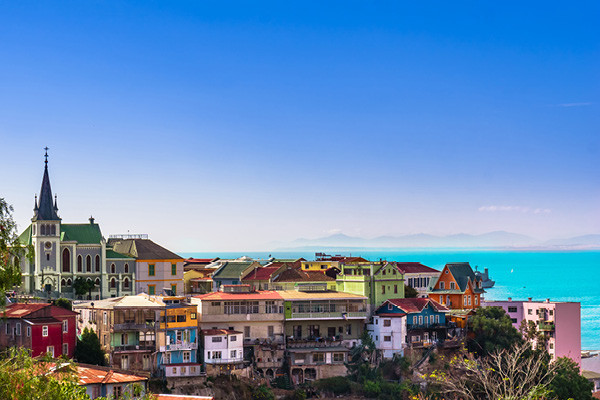
Chile’s diversity deserves more delineated DOs
The demarcation of Chile’s regions and sub-regions could and should be much clearer, focusing in with smaller local denominations to better reflect the diversity of the country’s winemaking.
This was one of the points raised at the first of two virtual 2021 Chile Review masterclasses and tastings hosted by report author and Harpers columnist Tim Atkin MW, in partnership with Wines of Chile.
As in his report, where he cites "confusion" caused by "the country’s labyrinthine appellation system", Atkin highlighted how most of Chile’s DOs centre around the series of east-west river valleys that run down the country, with this spread of vineyards further bisected by the three broad demarcations introduced more recently and which run north to south.
“[The appellations] are mostly named after river valleys and they tend to be quite big,” he said. “So in 2012 Chile divided then into three chunks – Andes, which needs no explanation, Costa, which is coast, and Entre Cordilleras, which means between the mountain ranges.”
Partly because of this, and the slow coalescence of more localised DOs, Atkin suggested that “it’s really a good idea to look at producers and vineyards as opposed to regions”, highlighting the difference between (for example) Elqui Andes and Elqui Costa.
In response to a later question by Beverley Blanning MW on whether Chile, with its extremes and diversity of viticultural sites running 3795km from the Atacama desert down to the verdant deep south, should do more to define the specific character of localised regions, the answer was an unequivocal ‘yes’.
“It could be much clearer and maybe we need specific local denominations to explain” said Atkin, in reference to the characteristic and differences thrown up across a given valley because of the east-to-west location of the vineyards.
Winemaker Emily Faulconer of Vina Carmen agreed that further progression down this route would be timely, not least as Chilean winemakers continue to push into new territories and refine their understanding of more localised existing terroirs.
“I totally agree and as producers we are pushing towards that,” said Faulconer.
“And it is something that is resulting [from] necessity. It’s what happened with Apalta for example, it ended up being so important it gained a DO. But yes, we need to get more specific, otherwise we end up talking about growers more than a specific site.”
Faulconer added that this would come with time, with the process underway across many parts of Chile.
This in turn could help boost recognition of Chile’s varietal diversity, helping to dispel the mistaken idea, as highlighted by Atkin, that the country “only grows two or three things”, such as Cabernet Sauvignon, Merlot and Sauvignon Blanc.
In compiling his 2021 Chile Review report, Atkin said he was “amazed by the number of grape varieties [included] this year”, adding that Chile is now growing 51 red varieties and 42 whites of distinct and commercial interest.
The wines offered for tasting across this week’s two 2021 Chile Review masterclasses also backed this assertion, with varieties such as Riesling, Semillon, Cinsault, Carmenere, Garnacha, Malbec, Petit Verdot and a blend of Mediterranean varieties – much on the rise in Chile – all being shown, with old vines also very much part of the mix.
Tim Atkin's latest column for Harpers on old vines can be found here.
Keywords:
- Chile
- Atkin
- MW
- varieties
- Vineyards
- review
- diversity
- DO
- three
- chile’s
- specific
- localised
- chile review
- 2021 chile
- review masterclasses
- river valleys
- local denominations
- 2021 chile review
- chile review masterclasses
- process underway across
- varietal diversity helping
- chile’s varietal diversity




